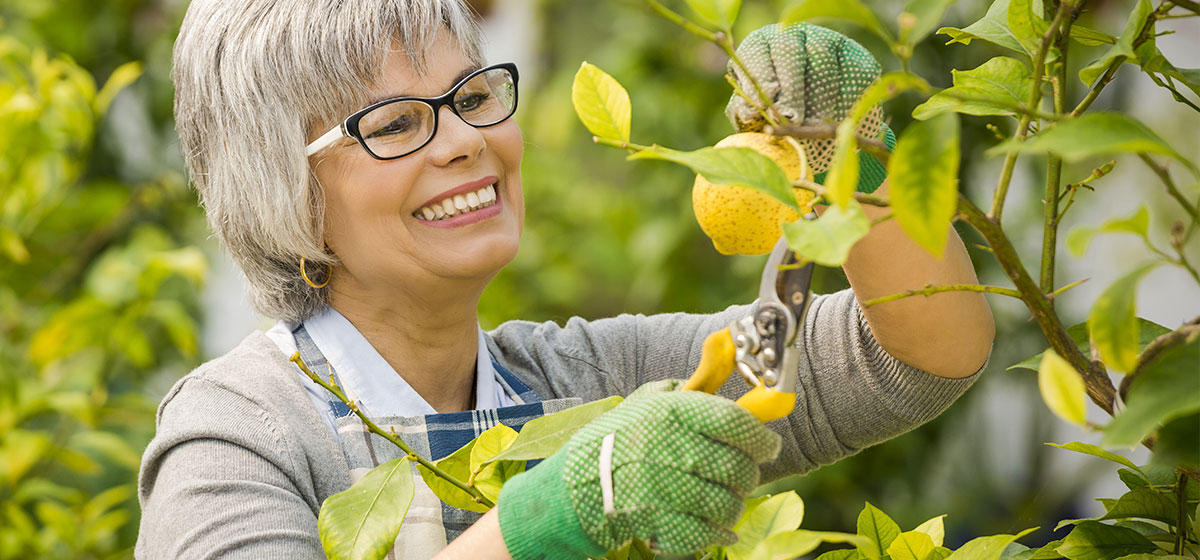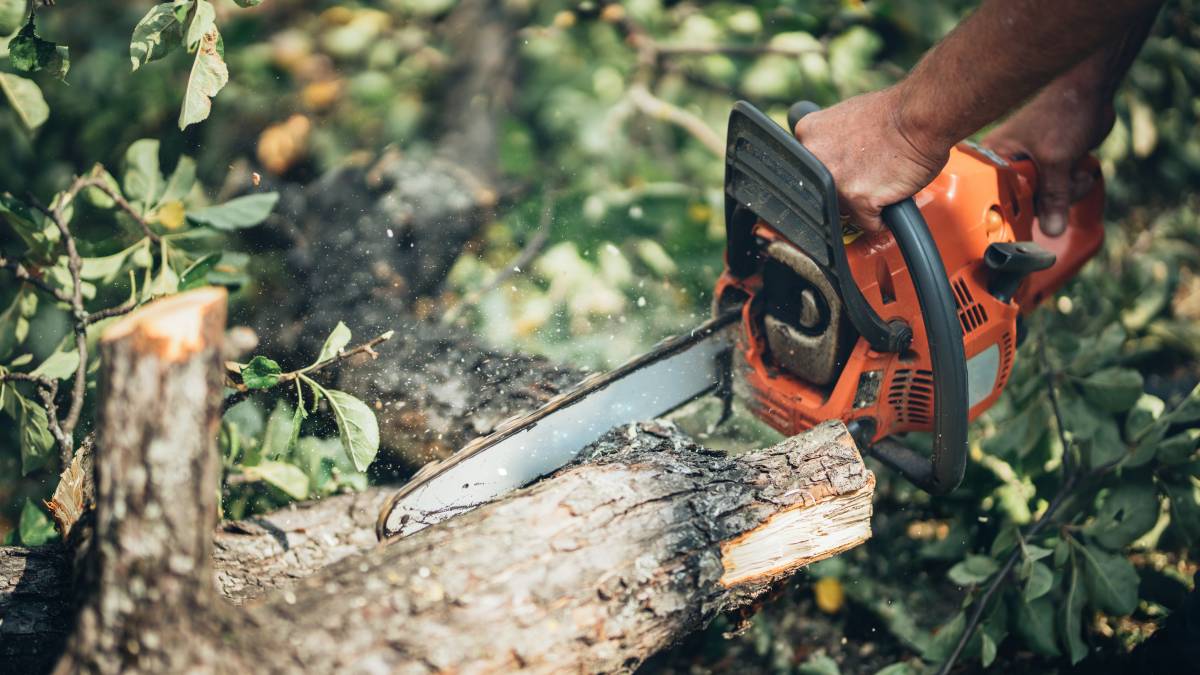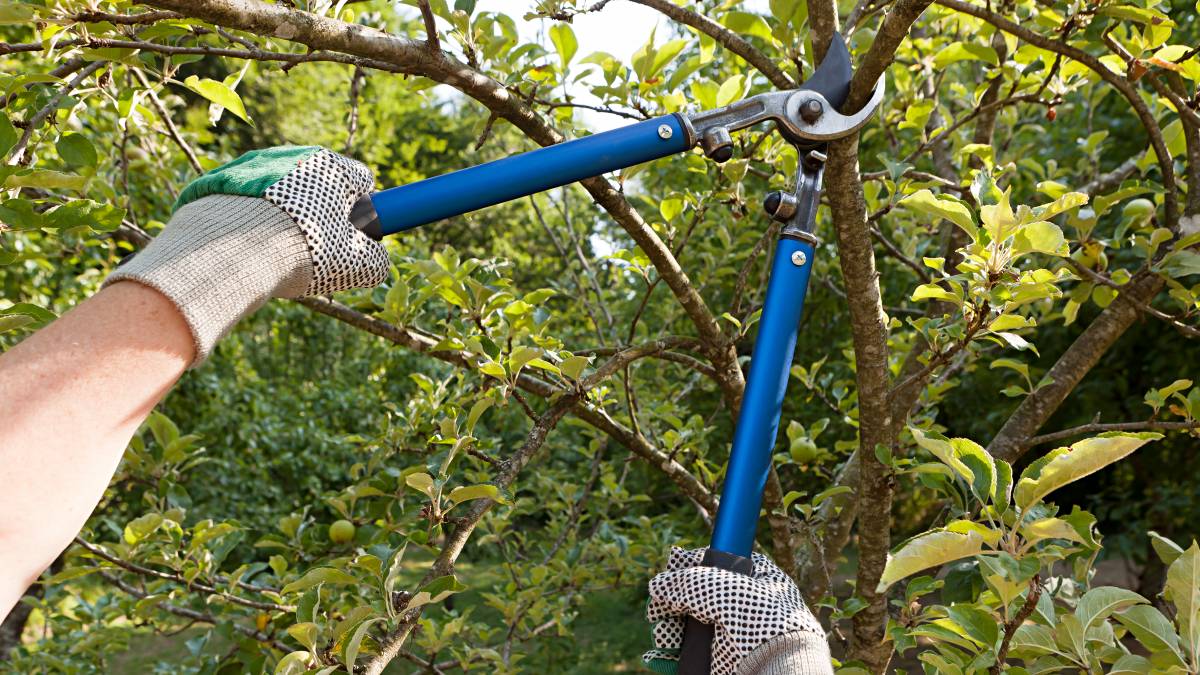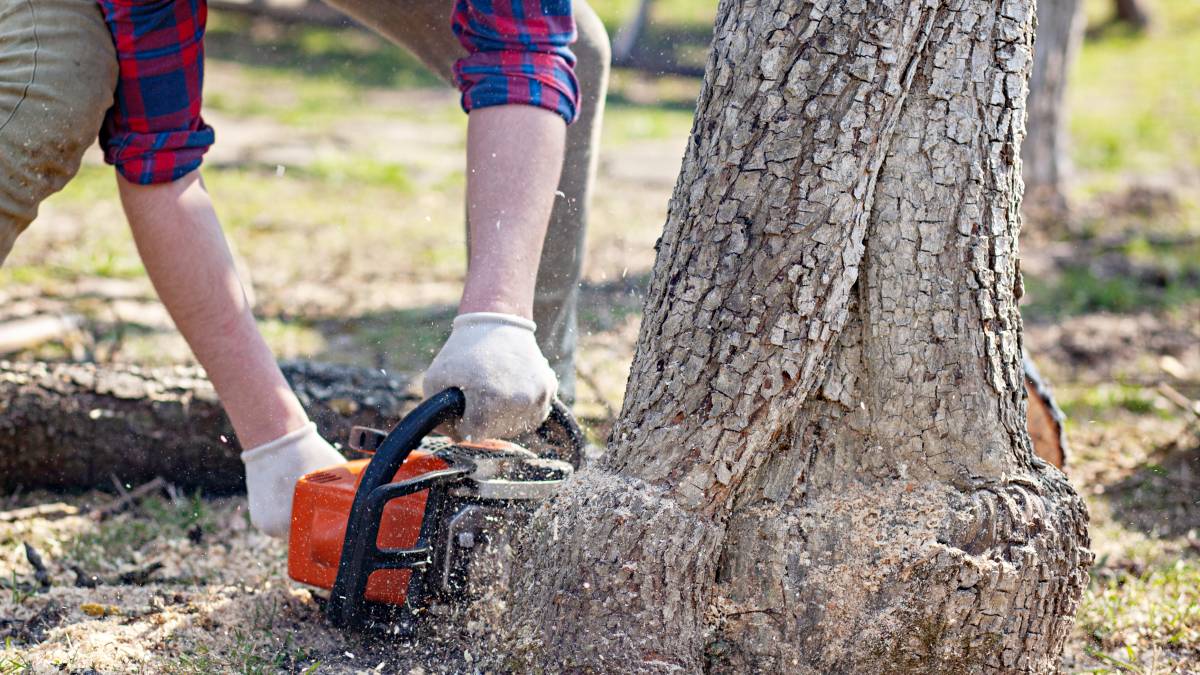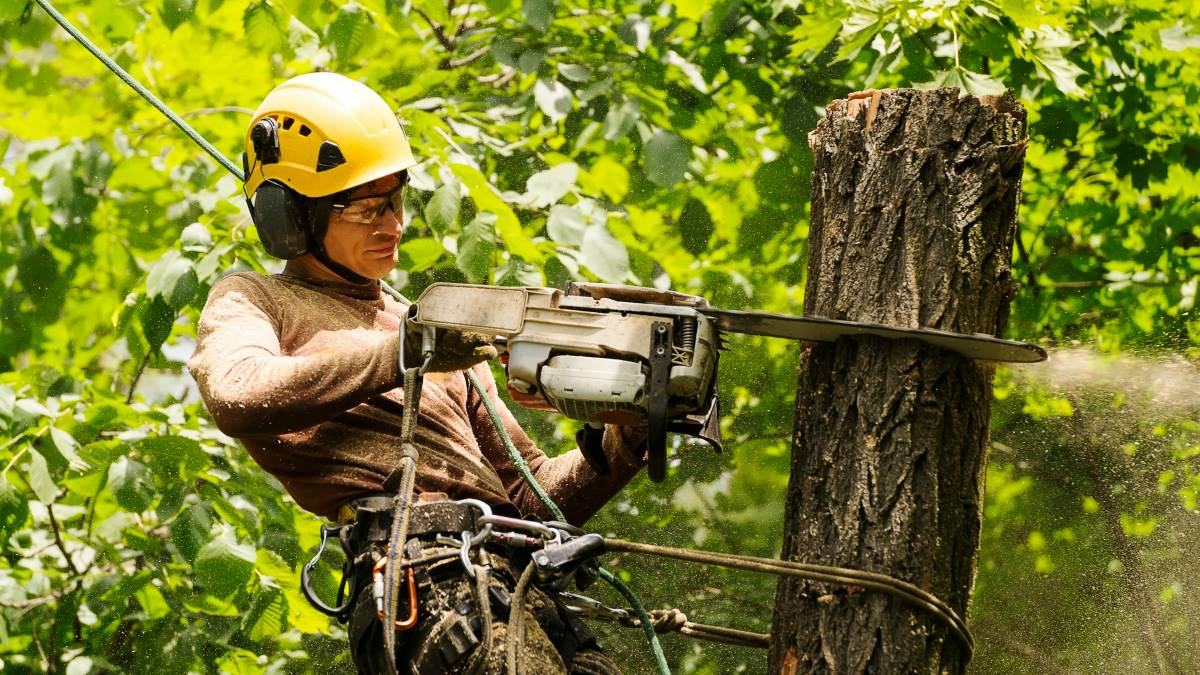- Home/
- Guides/
- Tree Pruning/
- How to Prune an Apple Tree
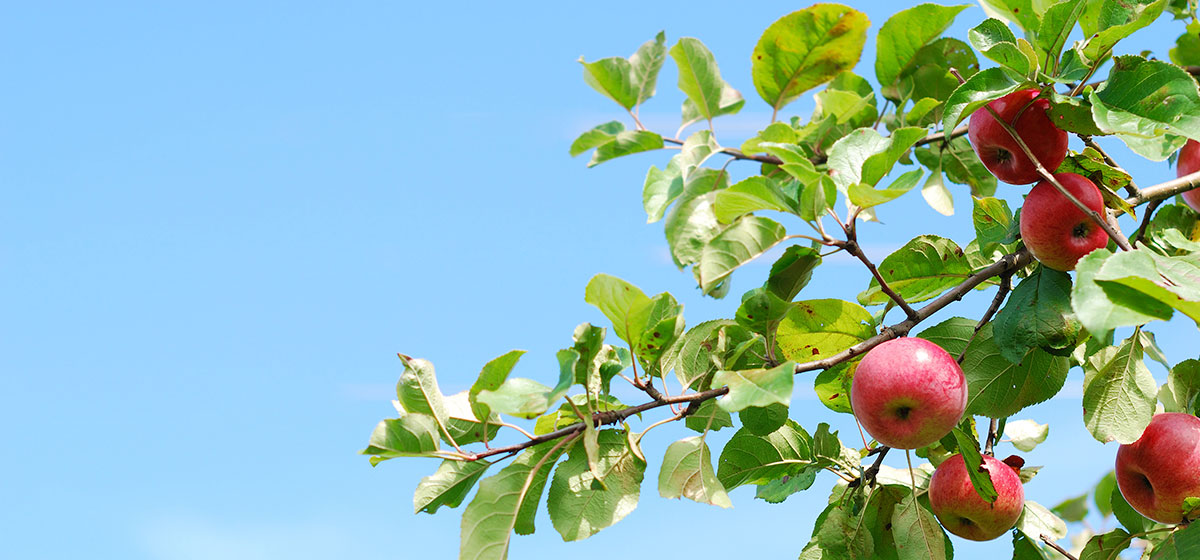
How to prune an apple tree correctly
Find a tree pruning serviceLast Updated on
Learning how to prune an apple tree correctly is important if you want to have access to delicious fruit in your very own backyard (or front yard). These trees require some basic maintenance and annual pruning to remain in good shape. You need to know when to cut and how to cut specifically.
As apple trees produce fruit on long-lived branched fruiting spurs, they do not require as much work as some other fruit trees. You can even wait a couple of years before needing to touch them at all! We have all of the tips to make sure your fruit growing endeavour is a success. Read on to learn how to prune an apple tree and keep them healthy and happy for many years to come.
Understanding how your apple tree produces fruit
The pruning process has a lot to do with how your apple tree produces fruit. Apple trees will undergo extensive new growth every year inclusive of new shoots and growth of existing branches. A ring or band of tissue will form around the shoots, and it is important to be able to spot this when it comes to pruning. The tree will spout new flower buds each summer that will open up next spring as well!
The importance of pruning your tree
The correct pruning of an apple tree leads to better fruit production. If there is too much shade through the interior of the tree, you will see a decrease in flowering and weakened branches. The sunlight gives your tree strength, so pruning helps it reach all of the areas of the tree while also improving air circulation, which lessens the risk of disease.
Pruning also removes dead and dying branches while keeping your tree within a reasonable size and shape. There’s no point growing fruit on a huge tree that it’s too hard to pick from after all! The more open your canopy, the larger and healthier the fruit. An interesting rule of thumb is the less fruit you have on your tree, the bigger apples that are on there will be. Your tree has a limit on its energy resources, so pruning helps it to give that energy more directly to what is left, as opposed to spreading small amounts out over more space.
When to prune your apple tree
The best time of the year to prune an apple tree is late winter or early spring as this is when your tree is still dormant. The goal is to prune before active growth begins, and it will be easier to see and avoid the buds at this time. If you want to do some summer pruning, aim for late winter, but do not over prune at this point as it will weaken your tree when mixed with the heat. This will also decrease your fruit size and quality.
How to prune an apple tree
There are primary ways to shape and prune your apple tree:
- A natural shape that lets your tree grow into a large tree that leads to smaller apples overall
- Cultivated into a specific shape with one main trunk and several side limbs or two or more primary branches to fit a small space
- A shape that will grow along a wall creating a vine-like look
You can choose between a thinning cut or a heading cut, the primary difference being how much shoot or branch is removed. Thinning cuts reduce the number of branches and heading cuts increase them by encouraging shoot growth.
To perform these two cuts, do the following
- Thinning: Remove a shoot or branch completely at its base
- Heading: Remove the shoot or branch so that part of it stays on the tree, basically like shortening branches
Tree pruning in 5 Steps
- Assess the size and shape of the tree, noting dead branches, and limbs that are longer than you want to decide what needs to be pruned.
- Remove dead or damaged wood as well as any new growth coming from the base of the trunk. Use a thinning cut if a branch is dead or a heading cut to remove sections of dead wood
- Remove branches at the top of the tree, or sides were necessary to craft the overall size and shape
- Open up the canopy by removing branches that are too close to one another or ones that are growing back into the centre of the tree
- Trim roughly 20% to 30% of the active growth (this is where it is handy to know where the new growth starts)
Tips to improve your apple tree pruning
The following are some handy tips to keep in mind when pruning our apple tree:
- Avoid over-pruning, especially if you have left your tree for a couple of years without pruning. Pruning puts stress on your tree, so you want to limit the stress by pruning less vigorously to help the tree rebound quicker when you do
- If you have two live branches close together always prune the one with fewer buds as it is less unproductive
- Remove any large branches in smaller sections
- You can determine which branches to prune by the angle they grow. Remove ones that grow straight upward or down or any that are too vigorous, casting shade on lower branches
- Avoid pruning newly planted trees until they begin fruiting, as this encourages leafy shoots instead of fruit-bearing ones
- Make sure that you always clean up the downed branches as this is where possible diseases can thrive which will infect the rest of your tree
Enjoy getting the best out of your apple tree!
With the right amount of pruning and correct process, you’ll have a healthy and happy apple tree that will look great in the garden and give you fruit for many years to come. If you are working at having a larger tree, it’ll also provide shade making a great place to sit, eat an apple and enjoy your time outdoors.
If all of this sounds great, but you aren’t quite comfortable with the pruning process yourself yet, engage a tasker that can do the tree pruning for you! You’ll be able to find plenty of experienced green thumbs who can help with all kinds of pruning, overall garden tidy up, set up and garden planting, and even shrub bush trimming to ensure your garden looks its best without the time requirement from your busy schedule.
If gardening is your happy place, however, and you love to tackle the tasks yourself, have a read of our other helpful articles to set up the finest outdoor area you can! We have tips on garden flowers, how to set up that cute cottage garden look, and the best vegetable garden design options. If growing your own food is your goal, check out our ultimate guide on how to start a full vegetable garden and which vegetables are best to grow in winter. With our help, your garden will become your personal supermarket in no time at all!
Apple Tree Pruning FAQs
The best time of the year to prune an apple tree is late winter or early spring as this is when your tree is still dormant. You can do some light pruning in summer but make sure this is nowhere near as in-depth as your winter prune. The goal is to prune before active growth begins, and it will be easier to see and avoid the buds at this time. If you want to do some summer pruning, aim for late winter, but too much at this time of year will weaken your tree when mixed with the heat, decreasing your fruit size and quality.
When pruning an apple tree, aim to trim roughly 20% to 30% of the active growth. It is important to be able to tell where the new growth starts, which is identifiable by a ring or band of tissue that will form around the shoots.
To correctly prune an overgrown apple tree, remove the dead or damaged wood as well as any new growth that is coming from the base of the trunk. Then you will need to fully remove any dead branches or partially remove any sections of deadwood. Remove the branches at the top of the tree, or sides were necessary to craft a more manageable size and shape and be sure to open up the canopy to allow light and air in by removing branches that are too close to one another or ones that might be growing back into the centre of the tree.
As this falls within the spring, you can certainly prune your apple tree in blossom. In fact, it will be easier to identify and remove any of the branches that did not make it through the winter by seeing where there is new growth at this time of year.
Find tree pruning services, fast
Find a tree pruning service
Related articles
